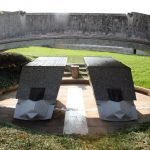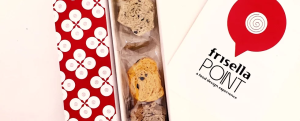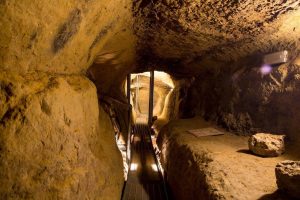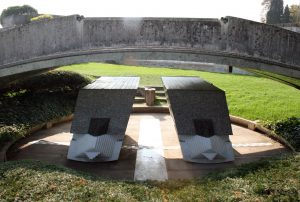On November 9, 1989, the Berlin Wall collapsed, the quintessential symbol of the Cold War. More than thirty years have passed since an event that marked the troubled history of the twentieth century.
The history of the wall begins after the destruction of the city in 1945 by the Red Army, Germany divided into four zones of occupation: American, English, French and Russian. For forty-five years these powers will divide the country. The same happened in Berlin, divided into east and west. West Berlin is a small western enclave in red East Germany, the GDR, the German Democratic Republic. Khrushchev, the secretary of the Communist Party, before the construction of the wall, aware of the situation, speaking of the German city said: “Berlin is like the testicles of the West. When I want to make the West scream, I crush Berlin”. Until 1961, the year the wall was built, 3.5 million inhabitants of the GDR had left the German Democratic Republic to move to the West. About 20% of the total population. The elite of the country was leaving: professionals, teachers, intellectuals. A real exodus that threatened the communist block system. Crossing the border was very simple, you just had to take the subway or a surface line, which led from east to west. Every day thousands of East Berliners reached the West for work or to visit relatives, it was obviously forbidden to move permanently, but it was not difficult to do so. During the first years of the division of the city, the power lines had been separated, but not the aqueduct and means of transport.
AUGUST 13, 1961
The situation changes in the night between 12 and 13 August 1961, when Ulbricht, the secretary of the Communist Party of the GDR, with an operation led by Honecker and approved by Khrushchev, gives the order to close the border, with immediate effect, between the two Berlin. Forty thousand men erect, in a single night, a wall of steel or, better, of barbed wire 150 kilometers long. Three hundred tons of barbed wire used, a disproportionate amount, that the GDR had found, in great secrecy, in the previous weeks also in the West. At six in the morning of August 13, 1961, the work could be said to be finished. Ten thousand men and Soviet tanks patrolled the border, the subway had been closed. The army of workers, a voluntary paramilitary body, also guarded the border, its purpose was to convey the idea that the people were in favor of the decision. That morning when the East Berliners took to the streets, they found the army and especially the army of workers patrolling the border, with their weapons not so much turned towards the menacing West as towards the citizens of the GDR, for fear that they would flee. Many did it that day, about eight hundred people, but no one hurt them, the weapons were not loaded just to avoid accidents of that kind.
THE BULWARK OF ANTI-FASCIST PROTECTION
The bulwark of anti-fascist protection, as it was called the wall in the Democratic Republic, continuously perfected and defended, will divide Berlin and the world for twenty-eight years. Every successful or unsuccessful escape attempt made it increasingly impassable. The maintenance and upkeep of the wall represented an exorbitant expense for the east and its precarious economy. It is estimated that, starting from the 1980s, the approximate amount was almost one billion euros nowadays per year. In addition, the wall was constantly lit up, this involved continuous rationing of the electricity supply to the citizens of East Berlin, especially in the winter months.
WHAT SOMEONE SAID ABOUT THE WALL …
“I have no intention of building a wall”. Walter Ulbricht, East German Head of State, June 15, 1961.
“Those who do not respect the border will have to taste the bullets”. Heinz Hoffmann, Minister of Defense of the GDR, August 1963. “Freedom has many difficulties and democracy is not perfect, but we have never had to build a wall to keep our people inside and prevent them from leaving us. All free men, wherever they live, are citizens of Berlin and, therefore, as a free man, I am proud of the words Ich bin bin Berliner (I am a Berliner)” J.F. Kennedy, President of the United States, June 26, 1963. “Mister Gorbachev tear down this wall!” Ronald Regan, President of the United States, June 12, 1987. “The wall will remain for fifty and even a hundred years” Eric Honecker, leader of the GDR, January 19, 1989.
NOVEMBER 9, 1989
On 7 October 1989 the German Democratic Republic celebrated its fortieth birthday, its last. Meanwhile, demonstrations calling for reform and freedom multiplied in Belino Est. In the same month Honecker, the leader of the GDR, resigned, replaced by Egon Krenz who had decided to grant Eastern citizens permits to travel West. On November 9, 1989, during a press conference, the news spread that all East Berliners can cross the border and reach West Berlin. The Germans rushed to the border points and the guards could do nothing but open the gates. The wall had fallen without firing a single shot.
THE REMAINS OF THE WALL
In Berlin it is possible to visit what remains of the wall through a real journey through history, starting from the Brandenburg Gate, the symbol par excellence of divided Berlin, of the Cold War. It is now the representation of the unity of the city. In addition, Checkpoint Charlie, now a tourist trap with fake American soldiers, but during the Cold War it was a very famous border crossing point, reserved for foreigners and diplomats who could pass through the two areas of Berlin. It was the third gateway opened by the Americans, hence its name: Charlie is the third letter of the NATO phonetic alphabet. Right at Checkpoint Charlie, in October 1961, a few months after the construction of the wall, the Russian and American tanks faced each other directly and came very close to triggering the much feared Third World War.
POTSDAMER PLATZ
Potsdamer Platz was the heart of Berlin before it was destroyed in World War II. During the years of the cold war, the 62 thousand square meter area had become inaccessible due to the Wall. Today it is a lively square with a double row of pebbles to indicate the perimeter of the wall; furthermore, some small portions have been preserved and integrated with explanatory panels. Very close to the square it is possible to see one of the three hundred original watchtowers of the wall.
GEDENKSTÄTTE BERLINER MAUER
It is the memorial site of the Berlin Wall which describes it in every aspect. Naively, when you imagine the Berlin Wall you think of a simple dividing wall, but that was not the case.
THE STRUCTURE OF THE BERLIN WALL
The first inner wall, on the East Berlin side, was about three meters high and could be made of concrete or electrified wire mesh; numerous detection sensors were connected to the sighting turrets, or activated an automatic weapon. Once this first obstacle was overcome, you entered the death zone with a net about two meters high, reinforced with barbed wire, so there were ferocious dogs tied to steel cables to control the very large perimeter. The ground was covered with sand that was regularly raked for footprints; if, on the other hand, there were grassy surfaces below, there could be nails or mines. Only at the end was the real wall four meters high, with a concrete cylinder in the final part to make anchoring impossible. Once passed, there was still no safety: the surrounding land still belonged to East Berlin so the guards could fire on the fugitives. The real frontier consisted of the multiple panels that indicated the various sectors.
THE PURCHASE OF POLITICAL PRISONERS
Those who tried to escape were immediately caught and ended up in prison. During those twenty-eight long years, the GDR had found a way to make money through the sale of political prisoners. It was a major source of income for the Democratic Republic which had the twofold result of emptying prisons and reducing its deficit. It is estimated that between 1963 and 1990 West Germany paid two billion euros to the GDR in exchange for 32,000 prisoners. However, there were many successful escape attempts: the most spectacular with suspended cables, hot air balloons, ultralight aircraft, through tunnels dug underground, but also thanks to the ghost metro stations (the abandoned stations that connected the two Berlin), aboard the trains that legally crossed the border, swimming in the Spree. It is estimated that about one hundred and fifty people have died trying to cross the wall but over five thousand have succeeded.
EAST SIDE GALLERY
While in East Berlin the wall was gray, bleak and unapproachable, in West Berlin it was often covered in graffiti. After its fall, it was largely dismantled. The choice to keep a long stretch, about 1300 meters, parallel to the Spree, gave rise to the East Side Gallery, the wall transformed into a gallery of murals. Many artists engaged in the vast work, the paintings made, full of optimism and faith in the future, are a mix of political symbols, a tale of the past and futuristic visions. The best known painting is “My God help me to survive this deadly love” portrays Brezhnev, leader of the USSR, and Honecker, leader of the GDR, kissing on the lips with their eyes closed. The mural is not a figment of imagination, but a copy of a photo taken in 1979. That kind of kiss, in Communist countries, was a sign of great respect. In 2009 the painting and the entire gallery were restored. At the end of the works, a new threat endangered the entire wall: a real estate group wanted to tear down a portion to have direct access to the river. The numerous mass protests have managed to prevent such a mess.
DIE MAUER PANORAMA
It is a monumental work or rather a 360 degree panorama by the artist Yafegar Asisi. Since 2012, this fifteen meter high and sixty wide installation represents and describes East Berlin in the 1980s through the image of a desolate winter evening. The viewer is standing on a walkway located in West Berlin overlooking the death zone and the GDR. The immersive visit is of great impact, you are captured by the gloomy and sad atmosphere that envelops East Berlin, and you can also clearly understand the impact of the wall on the lives of Berliners.













